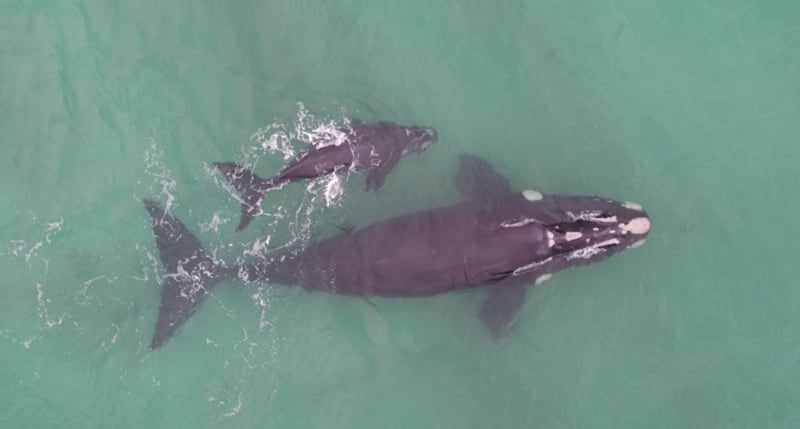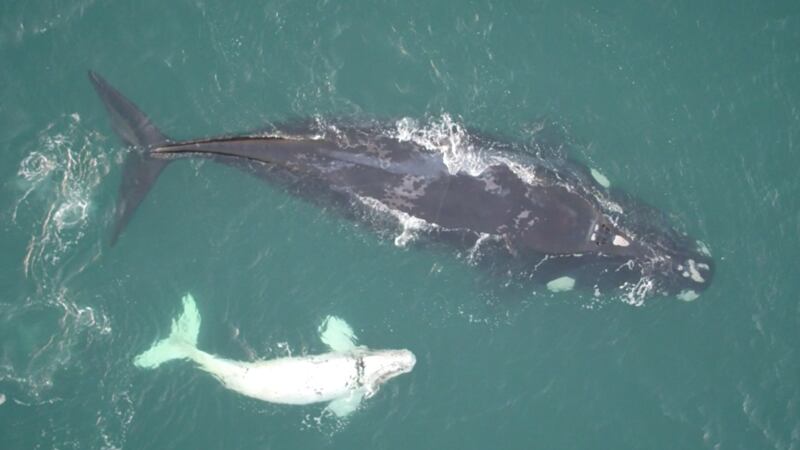Female southern right whales and their calves whisper to one another in order to avoid being overheard by predators, a new study suggests
The whale mothers and calves often try to hide from predators by gravitating to cloudy water.
But the loss of visual contact could force them to call to each other more, increasing the risk of attracting the wrong attention.
However, the new research indicates mothers and their calves shelter in the noisy surf, stay in close proximity and effectively whisper – calling softly less than once per dive – to avoid attracting any unwanted attention.

Even the 5 to 8-metre long southern right whale calves are vulnerable to attack by killer whales.
“One of the initial challenges was getting to know the whales in our study area,” said Mia Nielsen from Aarhus University, Denmark.
She travelled to Flinders Bay – off the southern tip of Western Australia where the whales breed – with Peter Madsen from the same institution, and Lars Bejder from the University of Hawaii.
They stealthily approached the whales while they rested at the surface near the shore, and the team attached sound recording tags to the youngsters and their mothers in the hope of recording the pair’s interactions.
The tags stayed on the mothers for about seven hours on average but the calves’ tags detached within 40 minutes.
Ms Nielsen said: “It was difficult to assign the calls to either the calf or the mum, because they are so close to each other.”
Instead she assigned the calls to the calf-mother group.
Published in the Journal of Experimental Biology, the study found the animals were producing two types of call – a grunt and a mooing sound.
But the researchers discovered that instead of communicating continually, the mother and calf called less than once per dive.
And when they analysed the volume of the animals’ calls, they were surprised by how quiet the moos and grunts were.
The pounding waves drowned out the calls within a few hundred metres, making it difficult for killer whales to eavesdrop on the soft conversations, according to the study.
The study says: “Low-amplitude calling also reduces the risk of alerting eavesdropping killer whales of the location of the newborn calf, suggesting that this acoustic crypsis may have evolved as an antipredator strategy.”








